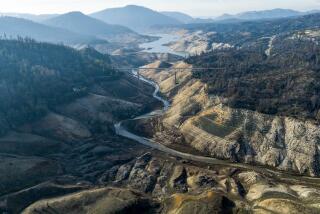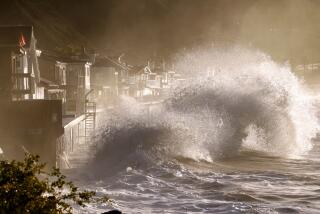Why California Forecasters Have a Hard Job--Really
- Share via
How accurate are weather forecasts? Well, don’t base your most important plans on one. KNBC-TV weather caster Fritz Coleman says that five-day forecasts are 50% accurate; 48-hour forecasts are 70% accurate.
“Most of the weather in Southern California comes from out over the ocean where there are no fixed observation stations.” says UCLA meteorologist James Murakami. “Most of what we get is from ships, and ships generally try to avoid inclement weather. So where you need it most, there is a data void.
“So you rely mostly on satellite pictures to give you an idea what’s out there. The drawback is that you’re looking at pictures of the top of a cloud, so you are not always certain how deep the cloud layer is. If the cloud is deep, it’s more likely there is rain in it.”
The result is that fair weather is predicted more accurately than storms.
Computers make predictions by feeding weather observations into formulas, and they also forecast fair weather more accurately than foul.
“The easiest thing to forecast is a plain situation like we’ve had for so much of these drought years,” Murakami says. “When the forecast is for a high pressure system, which usually brings fair weather for 10 days, you might as well say fair weather and come back 10 days later.
“When you add moisture, you get into problems of where the moisture is going to be occurring: at the bottom of the atmosphere, in the middle or at the top and in what kind of layers.”
Subtropical storms are harder to forecast than those from the Gulf of Alaska, Murakami says.
“The physics that go into computer models for these storms were meant for storms of mid and higher latitudes. When you deal with subtropical, lower-latitude storms, the physics is not quite the same, so errors can add up more quickly.”
More to Read
Sign up for Essential California
The most important California stories and recommendations in your inbox every morning.
You may occasionally receive promotional content from the Los Angeles Times.













